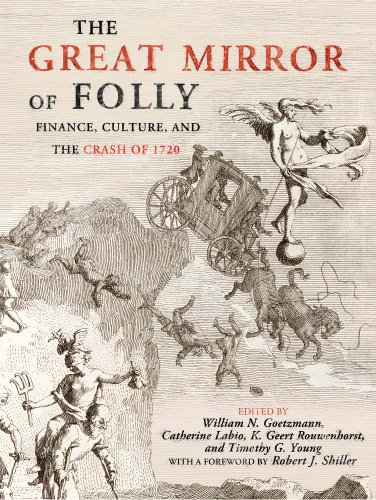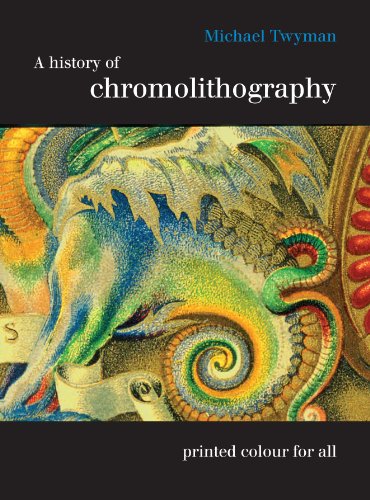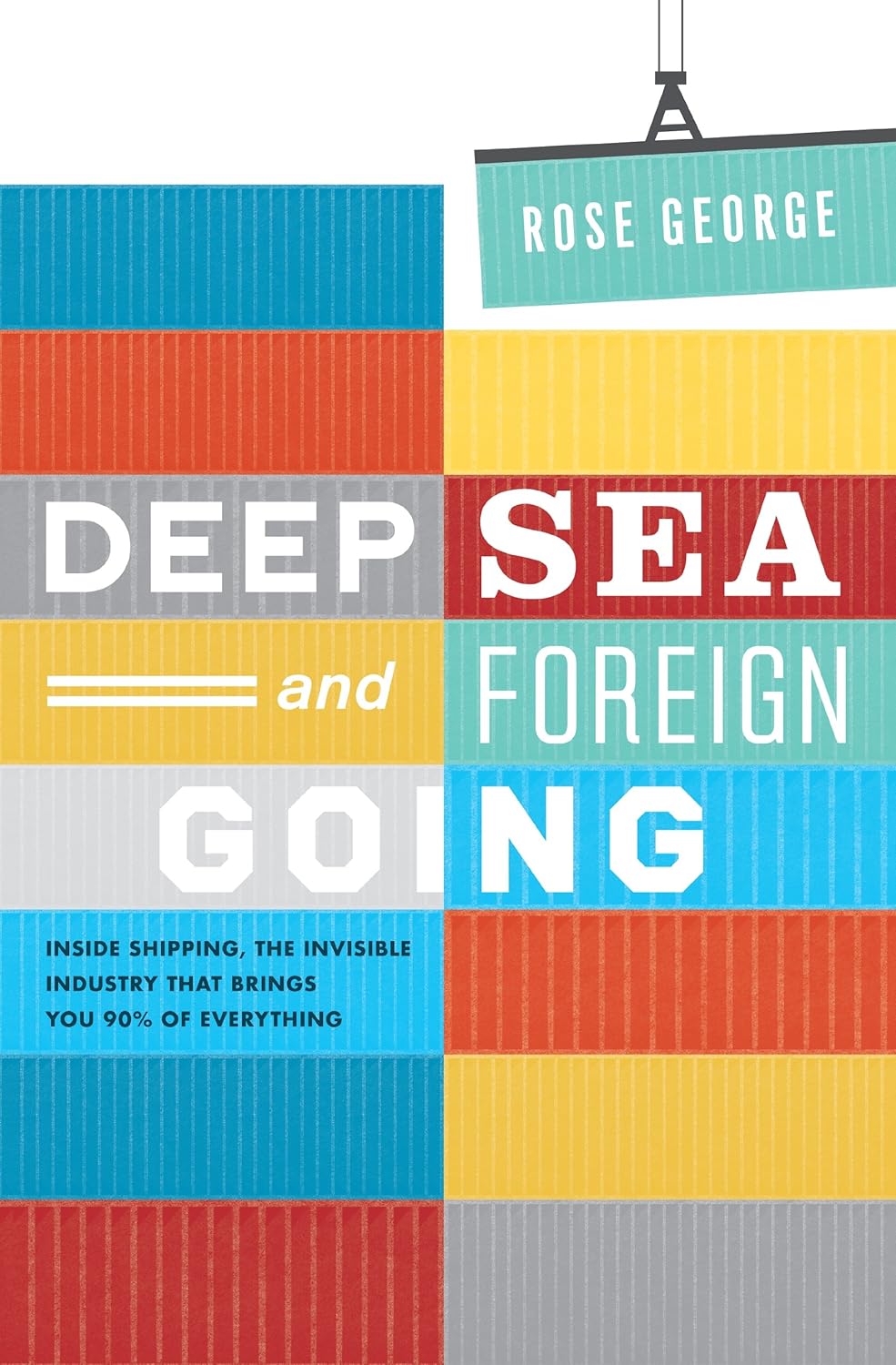 |
| Picture: Amazon |
William N. Goetzmann et al (eds) The Great Mirror of Folly: Finance, culture and the crash of 1720 Yale University Press 2013 £50
This book is about a book. The Tafereel was a book of prints published after the financial crisis of 1720 that affected France, England and Holland. Many of the prints are satirical and some still raise a smile. I particularly like The Wholesale Wind-Peddlers' Fair, below.
![A broadside the South Sea Bubble and other investment schemes of 1720; with an engraving showing on the L a man seated in the air on clouds, distributing papers with his L hand, behind him two other men, one using bellows and blowing away a cat attached to four balloons, in the R foreground a chest filled with papers attacked by mice; with engraved titles, inscriptions, and verses in three columns. (n.p.: [1720])](http://www.britishmuseum.org/collectionimages/AN00320/AN00320480_001_l.jpg?width=304) |
| Picture: British Museum |
This edited book is a collaboration between bibliographers, art historians and economists. The economic history corrects a number of myths, partially rehabilitating the notorious Scottish financier John Law, still widely regarded as culpable for a major financial crash in France. It also points out that the financial crisis was particularly mild in the Netherlands, and the book should be regarded as a satire mainly on foreign follies.
One bibliographer complains of the contradiction between the book's stated aim of criticising financial excess and the book's nature as a luxury commercial object, which is a trite observation that can be made of any book that is critical of business or of capitalism but is sold on the market. But the bibliographic observations about the different extant copies are interesting.
The best part of the book is the reproductions of the prints themselves, though it's regrettable that they only published a selection. You can see them online here.
The best part of the book is the reproductions of the prints themselves, though it's regrettable that they only published a selection. You can see them online here.
 |
| Picture: Amazon |
Michael Twyman A History of Chromolithography: printed colour for all British Library 2013 £75
This huge book is a definitive history of chromolithography, beautifully illustrated and fascinating. The illustrations are wonderful. Twyman is wide-ranging, discussing the artistry and the technical aspects, the social history and the business of chromolithography. It's a terrific insight into nineteenth century visual culture, and the coloured reproductions of works of art are particularly interesting - the Medici Society prints (their original painted copies are preserved in the V&A, with a selection illustrated here) and the beautifully produced catalogues of private art collections, for example. But the printed adverts and ephemera are also often strikingly beautiful. It's a big book on a slightly arcane topic, but strongly recommended.
This huge book is a definitive history of chromolithography, beautifully illustrated and fascinating. The illustrations are wonderful. Twyman is wide-ranging, discussing the artistry and the technical aspects, the social history and the business of chromolithography. It's a terrific insight into nineteenth century visual culture, and the coloured reproductions of works of art are particularly interesting - the Medici Society prints (their original painted copies are preserved in the V&A, with a selection illustrated here) and the beautifully produced catalogues of private art collections, for example. But the printed adverts and ephemera are also often strikingly beautiful. It's a big book on a slightly arcane topic, but strongly recommended.
 |
| Picture: Amazon |
Sir Lawrence Freedman Strategy: A History Oxford University Press 2013, £25
Freedman is a distinguished scholar of military history and strategy, and in this book he expands his field of study to consider political strategy and business strategy. The first part is an excellent history of military thought with good summaries of the classic strategists. He is a flexible and sophisticated scholar who is attuned to the importance of what Carl von Clausewitz called the 'fog of war'; the need to adapt plans to the uncertain and changing experience on the ground. I was less convinced as he widened the study to the modern era, when the term 'strategy' has been applied promiscuously and carelessly.
I'm not convinced that distilling the strategy of Marx, Engels and Lenin from their wider political thought tells us much about strategy. And thinking on business strategy is mostly too superficial, too disparate and too intellectually unserious to merit this kind of scholarly attention. Military strategy addresses more clearly defined problems, and the history of military strategy is interesting because it has engaged great minds like Clausewitz and Machiavelli. Business strategy, not so much. Its problems are more protean than the problems of military strategy, and it resists distillation and generalisation; they are better addressed through separate disciplines like economics, finance and psychology.
Peter Drucker is the most serious, intelligent and worthwhile writer on business strategy. He rightly gets limited attention in this book, because Drucker's great merit was his sensitivity to context; he eschewed grand theorising, instead applying his intellect and learning to specific cases and narrow problems. He was lionised as a great business writer, but didn't set himself up as a guru. The best business strategy is pragmatic, but that doesn't make for a good story.
The later sections on business and politics struck me as more impressionistic, reflecting the superficiality of the sources. Analysis of Homer and Thucydides gives way to barbed comments from journalists like Lucy Kellaway and John Kay. And some of his points are mistaken - it was George W Bush not his father who said Christ was the thinker of philosopher who most influenced him, because He changed his heart (p. 449). Freedman's intelligence, learning and wisdom make the book worthwhile throughout, but his treatment of business and political strategy as part of the same tradition as Thucydides, Machiavelli and Clausewitz does not convince.
 |
| Picture: Amazon |
Rose George Deep Sea and Foreign Going: Inside shipping, the hidden industry that brings you 90% of everything Portobello Books 2013 £14.99
The container ship and the Internet are the sinews of globalisation. The Internet is more exciting, but container ships deserve more attention. The Box was a great study of how the shipping container changed the world economy (trust me, it was more interesting than it sounds...). This book tells another part of that story. Rose George traveled on a container ship and spoke to people at all levels of the shipping industry to research this fascinating account. It's reportage rather than analysis, but it's reportage of a high order on a subject quite alien to most of us. The shipping industry is gargantuan; 90% of everything reaches us by ship. But not many of us know any merchant mariners or have much idea of what it's like to work on a ship. Much of it is awful - poor conditions, few rights and many risks. She disabuses us of any romantic ideas about modern piracy, and shows that modern ships sink far more often than you'd think. Disturbing stuff, but also fascinating and well-told.
I've been reading some lighter fiction over the festive period. Philip Kerr is always good fun; his series of crime novels set in and around the Third Reich are wonderful, with lots of clever references to classic hard-boiled crime fiction and to Nazi history. I found his new stand-alone novel Prayer less convincing, with long sections of reported speech and stilted plot development. Siân Busby's A Commonplace Killing came highly recommended. It's a lively pageturner, but I found its effort to capture post-war London too self-conscious. When you read novels written at that time, you are sometimes struck by the unfamiliarity of the surroundings, but in Busby's novel every page tries too hard to emphasise strangeness: rationing, privation, unfamiliar brands or phrases, ubiquitous smoking or the status of women. Enjoyable but frustrating.
No comments:
Post a Comment